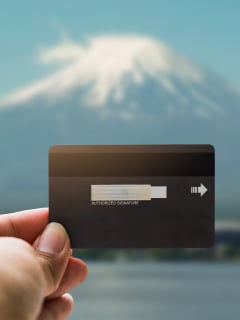CKYC Registry
-
Customer Service Contact us Service request Locate a branch
Find all the help you need
Scan the QR, get our app, and find help on your fingertips

Help CenterSupport topics, Contact us, FAQs and more
-
Login
Are you ready for an upgrade?
Login to the new experience with best features and services
-
Login
Are you ready for an upgrade?
Login to the new experience with best features and services
- Accounts
-
Deposits
IDFC FIRST Bank Deposits
View all Deposits -
Loans
IDFC FIRST Bank Loans
View all Loans - Wealth & Insure
-
Payments
IDFC FIRST Bank Payments
View all Payments -
Cards
IDFC FIRST Bank Cards
View all Cards - Blogs
- Corporate Account
-
Cash Management Services
IDFC FIRST Bank Cash Management Services
View all Cash Management Services - Supply Chain Finance
-
Corporate Lending
IDFC FIRST Bank Lending
View all -
Treasury
IDFC FIRST Bank Treasury
See more details - NBFC Financing
Support topics, Contact us, FAQs and more
- IDFC FIRST Bank Accounts
-
Savings Account
-
Corporate Salary
Account -
Senior Citizens
Savings Account -
First Power
Account -
Current Account
-
NRI Savings
Account -
TASC Institutional
Account -
Savings Account
Interest Calculator
- IDFC FIRST Bank Deposits
-
Fixed Deposit
-
Recurring Deposit
-
NRI Fixed Deposit
-
Safe Deposit Locker
-
FD Calculator
-
RD Calculator
- IDFC FIRST Bank Loans
-
Personal Loan
-
Consumer Durable
Loan -
Home Loan
-
Business Loan
-
Professional Loan
-
Education Loan
-
New Car Loan
-
Pre-owned Car Loan
-
Two Wheeler Loan
-
Pre-owned Two
Wheeler Loan -
Commercial Vehicle
Loan -
Gold Loan
-
Loan Against Property
-
Loan Against Securities
-
Easy Buy EMI card
-
Personal Loan
EMI Calculator -
Education Loan
EMI Calculator -
Home Loan
EMI Calculator
- IDFC FIRST Bank Wealth & Insure
-
FIRST Select
-
FIRST Wealth
-
FIRST Private
-
Mutual Funds
-
Sovereign Gold Bond
-
Demat Account
-
Term Insurance
-
Life Insurance
-
Health Insurance
-
General Insurance
-
Bonds
-
Loan Against
Securities -
Portfolio Management
Service
- IDFC FIRST Bank Payments
-
FASTag
-
Credit Card
Bill Payments -
UPI
-
Funds Transfer
-
Forex Services
-
Pay Loan EMI
- IDFC FIRST Bank Cards
-
Ashva :
Metal Credit Card -
Mayura :
Metal Credit Card -
FIRST Millennia
Credit Card -
FIRST Classic
Credit Card -
FIRST Select
Credit Card -
FIRST Wealth
Credit Card -
FIRST WOW!
Credit Card -
Deals
-
Debit Cards
-
Co-branded Cards
-
Credit Card
EMI Calculator -
FIRST Corporate
Credit Card -
FIRST Purchase
Credit Card -
FIRST Business
Credit Card
- Premium Metal Credit Cards
-
AshvaLifestyle1% Forex₹2,999
-
MayuraLifestyleZero Forex₹5,999
-
FIRST PrivateInvite Only
- Best for travellers
-
MayuraZero ForexMetal₹5,999
-
Ashva1% ForexMetal₹2,999
-
FIRST WOW!Zero ForexTravelLifetime Free
-
FIRST SWYPTravel OffersEMI₹499
-
FIRST Select1.99% ForexLifestyleLifetime Free
-
FIRST Wealth1.5% ForexLifestyleLifetime Free
-
Club VistaraTravelLifestyle₹4,999
-
IndiGo IDFC FIRST Dual Credit CardTravelLifestyle₹4,999
- Max benefits, Free for life
-
FIRST Classic10X RewardsShoppingNever Expiring Rewards
-
FIRST Millennia10X RewardsShoppingNever Expiring Rewards
-
FIRST Select10X RewardsLifestyle1.99% Forex
-
FIRST Wealth10X RewardsLifestyle1.5% Forex
-
FIRST WOW!RewardsTravelZero Forex
-
LIC ClassicRewardsInsuranceShopping
-
LIC SelectRewardsInsuranceShopping
- Reward Multipliers
-
AshvaLifestyleMetal₹2,999
-
MayuraLifestyleZero Forex₹5,999
-
FIRST ClassicNever Expiring RewardsShoppingLifetime Free
-
FIRST MillenniaNever Expiring RewardsShoppingLifetime Free
-
FIRST SelectNever Expiring RewardsLifestyleLifetime Free
-
FIRST WealthNever Expiring RewardsLifestyleLifetime Free
- Rewards & Credit on UPI
-
FIRST Power+FuelUPI₹499
-
FIRST PowerFuelUPI₹199
-
FIRST EA₹NVirtual1% Cashback₹499
-
FIRST DigitalVirtualUPI₹199
-
IndiGo IDFC FIRST Dual Credit CardUPITravelDual cards
- Fuel and Savings
-
FIRST PowerRewardsUPI₹199
-
FIRST Power+RewardsUPI₹499
-
LIC ClassicRewardsInsuranceShopping
-
LIC SelectRewardsInsuranceShopping
- Express and Flaunt
-
AshvaMetal1% Forex₹2,999
-
MayuraMetalZero Forex₹5,999
-
FIRST SWYPEMIOfferMAX₹499
-
FIRST MillenniaRewardsShoppingLifetime Free
- FD Backed rewarding Credit Cards for all
-
FIRST EA₹NVirtualCashback₹499
-
FIRST WOW!Zero ForexTravelLifetime Free
-
CreditPro Balance TransferTransfer & SaveReduce InterestPay Smartly
- IDFC FIRST Bank NRI Forex Solutions
-
Send money to India-Wire transfer
-
Send money to India-Digitally
-
Send money abroad
-
Max Returns FD (INR)
- IDFC FIRST Bank MSME Accounts
-
Platinum Current
Account -
Gold
Current Account -
Silver Plus
Current Account -
Merchant Multiplier
Account -
Agri Multiplier
Account -
TASC Institutional
Account -
Dynamic Current
Account -
World business
Account -
First Startup
Current Account
- IDFC FIRST Bank Business Loans
-
Business Loan
-
Professional Loan
-
Loan Against Property
-
Business Loan for Women
-
Working Capital Loan
-
Construction Equipment Loan
-
Machinery Loan
-
Healthcare Equipment Loan
- IDFC FIRST Bank Business Solutions
-
Payment Solutions
-
Tax Payments
-
Doorstep Banking
-
Point of Sale (POS)
-
Escrow Accounts
-
NACH
-
Payment Gateway
-
UPI
-
Virtual Accounts
-
As per amendment in the Income Tax Rules, PAN or Aadhaar are to be mandatorily quoted for cash deposit or withdrawal aggregating to Rupees twenty lakhs or more in a FY. Please update your PAN or Aadhaar. Kindly reach out to the Bank’s contact center on 1800 10 888 or visit the nearest IDFC FIRST Bank branch for further queries.
-
-
Most Searched
Sorry!
We couldn’t find ‘’ in our website
Here is what you can do :
- Try checking the spelling and search
- Search from below suggestions instead
- Widen your search & try a more generic keyword
Suggested
Get a Credit Card
Enjoy Zero Charges on All Commonly Used Savings Account Services
Open Account Now
Finance
Debit card transaction limits: Pros and cons
Key Takeaways
Pros of debit cards include enhanced financial security, as limits can minimize potential damage from fraud, and improved self-control over spending, helping users achieve financial goals.
Some banks impose strict limits on debit cards, which might hinder necessary transactions.
The benefits of setting transaction limits on debit cards generally outweigh the drawbacks, promoting a responsible financial mindset and safeguarding against unauthorized use.
Debit and credit cards are among the best tools for financial empowerment. They offer cashless transactions, ensuring fund security through remote card blocking, and so much more. However, a 14 March 2023 Business Standard report shows that in 2021-22, there were 65,045 card and internet banking fraud cases, and the average fraud value is Rs 34,802 (as per Government data).
It thus becomes essential for you to set up debit card transaction limits as an additional security measure and minimise the damage should your card be stolen or misused.
The top 5 debit card transaction limits
1. International usage
The option allows you to enable or disable international transactions on your card. Unless you are travelling abroad or plan to transact on an international website, it is recommended that you disable international transactions. International transactions do not require a one-time password (OTP), so if someone uses your debit card or its details, they can transact on an international website easily. Therefore, disabling international usage unless you specifically need it is recommended.
Also read: Make overseas payments easier with international debit cards
2. Online transactions
You can enable or disable your debit card for online transactions from Ecom websites, mobile apps, and scanning QR codes. When this is enabled, you can set a debit card transaction limit. When the bank issues the debit card, it has a maximum daily purchase limit. You can keep this limit or lower it for online transactions. For example, the bank may issue a debit card with a daily purchase limit of Rs 5 lakhs; you may keep this limit or reduce it to Rs 50,000 or Rs 1 lakh if you wish (up to a maximum of Rs 5 lakhs).
READ MORE
3. Offline transactions
You can enable/disable your debit card for offline transactions too. Set a debit card transaction limit for in-store purchases or any other that are made from a POS machine.
4. Contactless transactions
This option allows for tap-and-pay transactions. The limit for contactless transactions is up to Rs 5000 for a single transaction. These do not require an authentication PIN. For transactions above Rs. 5000, you can TAP and enter your PIN.
5. ATM withdrawals
When enabled, you can set a limit on how much cash you can withdraw from an ATM.
Also read: Secure Banking tips to protect you from cyberbanking fraud
Pros and cons of setting debit card transaction limits
There are several advantages and disadvantages of debit card limits. The pros or advantages of debit card transaction limits include -
1. It enforces self-control
When you impose a spending limit on your Debit Card, it helps you control overall expenses. With a debit card transaction limit in place, you are less likely to make impulsive purchases. The purchase won't go through when attempting a transaction above the debit card transaction limit. It helps by making you a little more cautious about overspending, thereby helping you manage your finances better.
2. Enhanced security
Security is the most significant advantage of setting debit card transaction limits. Imagine a scenario where you lose your debit card or it is stolen. If it falls into the wrong hands, that individual cannot use the card for an amount higher than the set limit. If they attempt a transaction for a higher amount, the debit card payment will be declined. So, setting up debit card transaction limits is essential to minimise financial damage in the case of theft or misuse.
3. Responsible financial behaviour
Debit card transaction limits make you cautious about big-ticket spending. It encourages responsible financial behaviour. With spending limits in place, you can adhere to your budget.
4. Ease of usage on contactless transactions
It is super-easy to transact via contactless transactions. Just tap and pay. No PIN is required for transactions below Rs. 5000.
The cons or disadvantages of debit card transaction limits include -
1. Inconvenience during large purchases and emergency
Lower debit card transaction limits can be inconvenient for large purchases. Should you have to make a planned purchase with an amount higher than the limit, you need to modify the limit. With an increased limit, you can complete the transaction and will need to lower the limit again.
Modifying the debit card transaction limit to a higher amount can be difficult during emergencies. For example, spending time modifying the limit can be a hassle if there is a medical emergency. The same issue can arise when making an unexpectedly expensive purchase. For example, a crisis may require travel at short notice, where you may have to book flight tickets that may be higher than the transaction limit.
2. Limited scope for earning reward points
Several banks give reward points on debit card transactions. The higher the amount you spend, the more reward points you earn. However, debit card transaction limits limit your scope to earn reward points in a single transaction.
Also read: Top 10 technology trends for enhanced security in digital banking
Debit card transaction limits: A boon in disguise
The pros of debit card transaction limits outweigh the cons. The limit increases the likelihood of achieving financial goals by helping you develop a responsible financial mindset. So, it is wise to have debit card transaction limits in place. It will also ensure that the financial damage is limited in case of a breach.
IDFC FIRST Bank offers account holders a variety of debit cards with their Savings Accounts. All cards have the functionality to set transaction limits. You can enable or disable transactions for international spending, online/offline purchases, contactless banking, and ATM withdrawals quite easily. When you decide to enable any or all of them, you can set transaction limits for each.
Disclaimer
The contents of this article/infographic/picture/video are meant solely for information purposes. The contents are generic in nature and for informational purposes only. It is not a substitute for specific advice in your own circumstances. The information is subject to updation, completion, revision, verification and amendment and the same may change materially. The information is not intended for distribution or use by any person in any jurisdiction where such distribution or use would be contrary to law or regulation or would subject IDFC FIRST Bank or its affiliates to any licensing or registration requirements. IDFC FIRST Bank shall not be responsible for any direct/indirect loss or liability incurred by the reader for taking any financial decisions based on the contents and information mentioned. Please consult your financial advisor before making any financial decision.
The features, benefits and offers mentioned in the article are applicable as on the day of publication of this blog and is subject to change without notice. The contents herein are also subject to other product specific terms and conditions and any third party terms and conditions, as applicable. Please refer our website www.idfcfirstbank.com for latest updates.























